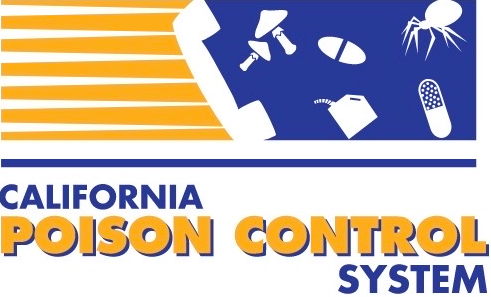Updated April, 2023 by Jeremy Hardin, MD and Allyson Kreshak, MD
Original author Allyson Kreshak, MD
Introduction
Methemoglobin is the oxidized form (Fe3+) of hemoglobin. It is generated when hemoglobin in the ferrous state (Fe2+) loses an electron and is oxidized to the ferric (Fe3+) state. Ferric hemoglobin is unable to bind oxygen, and excessive methemoglobin causes a left shift of the hemoglobin-oxygen dissociation curve. Together these effects lead to cyanosis, tissue hypoxia, and functional anemia. Certain drugs and genetic abnormalities can induce excessive methemoglobin formation and potentially severe hypoxia and death. Methemoglobinemia should be considered in all patients with cyanosis and hypoxia that are unresponsive to supplemental oxygen.
Case Presentation
A 30-year-old male presented to the emergency department with cyanosis and altered mental status. According to his partner he had been taking shots of alcohol when he accidentally drank “poppers” and rapidly developed lightheadedness, cyanosis, and confusion. Initial vital signs were notable for heart rate 140 beats per minute, blood pressure 80/30 mm Hg, respiratory rate 24, and a pulse oximeter reading of 82% on room air. He was markedly cyanotic, with blue discoloration of his extremities, lips, and face. An arterial line was placed to monitor his blood pressure and the blood was noted to be “chocolate-colored”. He was given oxygen supplementation via non-rebreather mask but his oxygen saturation did not improve. His hemoglobin was 14g/dL and blood gas co-oximetry results revealed a methemoglobin concentration of 66%. He was given 2 mg/kg methylene blue with improvement of his blood pressure, cyanosis, and pulse oximeter reading within 60 minutes. He was admitted to the hospital and was discharged the following day with a methemoglobin concentration of 6% and no sequela of his poisoning.
Questions
- What are the common causes of methemoglobinemia?
- What are “poppers”?
- How is methemoglobinemia diagnosed?
- What genetic disease increases risk of methemoglobinemia?
Epidemiology
Methemoglobinemia can be hereditary or acquired. Hereditary cases are rare and are due to structurally abnormal hemoglobin or enzyme deficiencies that decrease tolerance to oxidative stress. Acquired methemoglobinemia is more common, and is caused by many different medications and naturally occurring substances. Benzocaine has historically caused the most severe poisonings and dapsone is responsible for most cases reported to poison centers in the US. The true incidence of methemoglobinemia is unknown, but estimated incidence based on the use of the antidote methylene blue reported to the American Association of Poison Control Centers is approximately 100 cases per year. This number is likely a gross underestimate due to underreporting.
Pathophysiology
Methemoglobin is the oxidized form (Fe3+) of hemoglobin. When the deoxygenated iron moiety of hemoglobin is exposed to a strong oxidizing agent, it is oxidized from the ferrous (Fe2+) state to the ferric state (Fe3+). This abnormal state of hemoglobin is unable to bind oxygen and causes abnormal release of oxygen bound to the remaining ferrous hemoglobin to the tissues which leads to tissue hypoxia, functional anemia, and death in severe cases.
Low levels of methemoglobinemia are constantly present in your body as a result of normal oxygen transport and endogenous oxidizing agents. This physiologic methemoglobin is normally reduced back to ferrous hemoglobin by NADH methemoglobin reductase and the electron donor NADH. A secondary system utilizing glucose-6-phosphate-dehydrogenase (G6PD) is also responsible for reducing a small percentage of the body’s methemoglobin. When exposed to a strong oxidizing agent, both of these systems can be overwhelmed leading to elevated methemoglobin levels and acquired methemoglobinemia.
Many different medications and naturally occurring substances have been implicated in causing acquired methemoglobinemia. Some of the most common medications to induce methemoglobinemia are nitrates, bromates, chlorates, dapsone, local anesthetics, antimalarial agents. Nitrates and nitrites are powerful oxidizing agents. They are found in meat preservatives, vegetables, recreational drugs, and contaminated well water. Infants are particularly prone to methemoglobin formation due to gastrointestinal bacterial metabolism of less toxic nitrate preservatives to more toxic/oxidative nitrites. Nitrites known as “poppers” are also abused via inhalation due to their ability to cause euphoria, sexual enhancement, and vasodilation. When accidentally ingested, “poppers” can be life threatening.
Clinical Presentation
Central and peripheral cyanosis is one of the earliest signs of methemoglobinemia. Methemoglobin-induced cyanosis is dependent on the body’s total hemoglobin and becomes apparent when methemoglobin concentrations exceed 1.5 g/dL (percentage methemoglobin x hemoglobin value). In healthy individuals, cyanosis occurs with methemoglobin levels greater than 8%, however most people are asymptomatic below 15%. Increasing levels cause headache, dizziness, dyspnea, tachycardia, and tachypnea. Significant CNS depression and seizures can be seen at methemoglobin levels of 40%, and severe hypoxia and death occur at levels greater than 70%. Patients will also develop “chocolate brown” discoloration of arterial blood which fails to turn red upon exposure to air.
Genetic risk factors that impair responses to oxidative stress are likely responsible for explaining why some individuals develop methemoglobinemia while others do not after exposure to the same oxidizing stressors. Patients at highest risk of methemoglobinemia are those with hereditary deficiencies in methemoglobin reductase or G6PD, excessive dosing of oxidizing agent, simultaneous use of multiple oxidizing agents, and neonates less than six months of age (due to underactive NADH methemoglobin reductase).
Diagnosis
Recognizing the clinical symptoms of methemoglobinemia are critical to making the diagnosis. Unfortunately, the use of a pulse oximeter is not reliable in these cases. Pulse oximeters are designed to estimate oxygen saturation by measuring differences in the absorption of light at varying oxy- and de-oxyhemoglobin concentrations. They are not calibrated to detect methemoglobin and thus offer inaccurate results. Classically, patients with clinically significant methemoglobinemia will have pulse oximetry readings of 80-85% that do not improve with supplemental oxygen. The PaO2 that can be measured from an arterial blood gas is usually normal in the presence of methemoglobinemia as it measures dissolved oxygen, not hemoglobin-bound oxygen.
Venous or arterial blood gas co-oximetry is necessary to establish the definitive diagnosis of methemoglobinemia. Most modern co-oximeters can spectrographically identify oxyhemoglobin, deoxyhemoglobin, carboxyhemoglobin, and methemoglobin due to the unique light absorption spectra of each. The results of this test will be reported as the total percentage of hemoglobin that is methemoglobin. There are some newer bedside pulse oximeters that have the capability to measure methemoglobinemia, but increased cost relative to pulse oximeters without that functionality has limited their use.
Treatment
Most patients with methemoglobinemia will have mild symptoms and will not need treatment beyond discontinuation of the offending agent and he body’s endogenous mechanisms for reducing methemoglobin will be sufficient.
Methylene blue is the treatment for symptomatic patients with methemoglobin levels greater than 20% or all patients with levels greater than 25%. Patients with anemia or cardiovascular disease may require treatment at lower percentages due to decreased physiologic reserve. Methylene blue is a thiazine dye that is reduced by methemoglobin reductase and NADPH to leukomethylene blue, which then reduces methemoglobin to hemoglobin. Typical dosing of methylene blue is 1-2 mg/kg (0.1-0.2 mL/kg of 1% solution) intravenously over five minutes. This dose can be repeated in 30-60 minutes. Body fluids such as tears, saliva, and urine may turn greenish blue following methylene blue administration.
Adequate G6PD function is required to generate the NADPH that is needed for methylene blue to function as an antidote. Methylene blue can also be ineffective in patients with other etiologies of limited reducing capacity such as depleted NADPH due to chronic illness, and infants less than four months old with immature NADH methemoglobin reductase. In these patients, administration of methylene blue can precipitate hemolysis.
Question Answers
- What are the common causes of methemoglobinemia? Medications such as topical anesthetics, dapsone, and phenazopyridine are the most commonly implicated drugs causing methemoglobinemia. Other drugs include nitrites, nitrates, antimalarials, and bromates. There are also less common hereditary causes of methemoglobinemia.
- What are “poppers”? A street name for butyl, amyl, ethyl, or isobutyl nitrites that are often sold as liquid incense, solvent cleaner, or deodorizers. They can be abused via inhalation for euphoria, sexual enhancement, and vasodilation. They can cause life threatening methemoglobinemia when accidentally ingested.
- How is methemoglobinemia diagnosed? Venous or arterial blood gas co-oximetry will report a percentage of methemoglobin present in the blood and is the definitive method of diagnosis.
- What genetic diseases increase risk of methemoglobinemia? G6PD and methemoglobin reductase deficiency. Methylene blue can be ineffective in these patients and can precipitate hemolysis.



